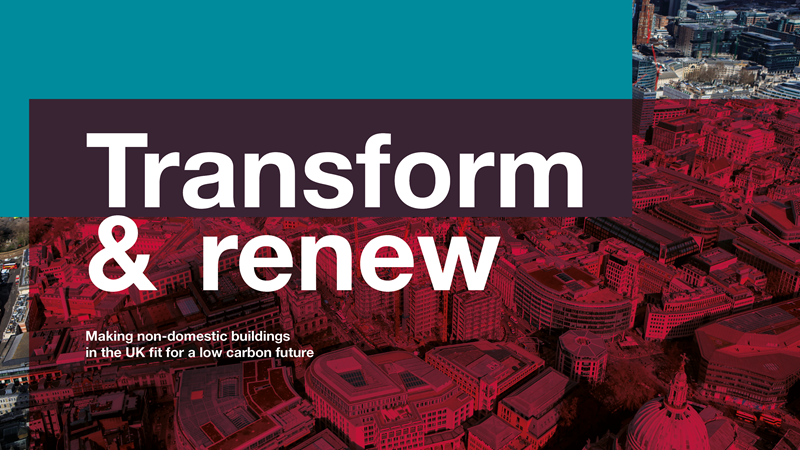Transform & renew: Making non domestic buildings fit for a low carbon future
The built environment is responsible for around 40% of all carbon emissions, globally. This must change and it is imperative that our whole industry acts on this.
If the UK is to reach net-zero carbon by 2050, a commitment the government has made in law, retrofit (the reusing and repurposing of existing buildings) must be a central part of that strategy. The UK has some of the leakiest building stock in the world, and we are wasting tonnes of carbon each year heating these buildings. According to the Committee for Climate Change (CCC) heating UK buildings accounted for more than a fifth of the UK’s greenhouse gas emissions in 2021, while London had the highest proportion of emissions from buildings out of all 15 major global cities assessed by JLL in 2022.
The CCC has said that reducing energy demand in buildings is now the biggest gap in current government energy policy. This has come into sharp focus due to the war in Ukraine and record high energy prices. It doesn’t just make environmental sense to enhance energy efficiency, but also economic sense. In fact, M&G Real Estate, CBRE and MSCI have all undertaken research that demonstrates buildings with high sustainability credentials command higher premiums and rental yields.
While a great deal of attention has been paid to decarbonising homes, reducing carbon across non-domestic properties like commercial buildings and publicly owned spaces has not entered public or political consciousness in the same way.
This is a grave oversight. There are approximately 1.75m 'non-domestic' properties in England and Wales, totalling around 13% of our building stock but accounting for 23% of UK operational carbon emissions from buildings. Failing to address the operational and embodied carbon across this estate would seriously impact the UK government’s ability to achieve net zero.
Alongside this, there has been a growing awareness in the built environment of whole-life carbon. It has been estimated that around 50% of the world’s raw materials are consumed in the development of buildings. We need to radically reduce the amount of embodied carbon in the buildings we are creating, through retaining and repurposing as much of a building as we can and re-using and recycling materials. Government policy is playing catch-up here and there is currently not even a consistent definition of how to measure embodied carbon.
We are facing a climate crisis, but our industry can help. Enhancing the energy efficiency of our building stock and changing the way we build to ensure we are using less carbon for the whole lifecycle of a building can turn the tide, but we need the support of government policy to be truly successful.
For this reason, Mace is launching a policy paper to showcase the actions government and industry can take that we believe will have the most significant impact. ‘Transform & renew - Making non-domestic buildings fit for a low carbon future’ sets out 12 recommendations to turbocharge commercial and public sector building retrofitting - read the paper in full via the link above.









